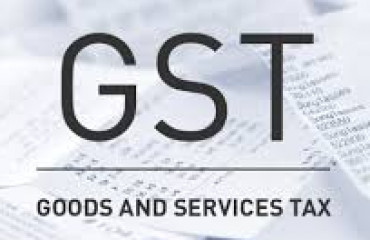
I have often used this column to argue for using technology to make the legal profession more accessible and less mysterious. I have been so ardent about the need for reform, that some of my brethren have taken me aside and asked me what the heck I’m thinking.
I have often used this column to argue for using technology to make the legal profession more accessible and less mysterious. I have been so ardent about the need for reform, that some of my brethren have taken me aside and asked me what the heck I'm thinking. After all, legal complexity is the friction that we lawyers thrive on. If technology makes the law easier to understand and more accessible, what use will anyone have for lawyers? I try and explain to them that, like it or not, things are about to change. Disruption always comes from the direction we least expect and no one benefits from burying one's head in the sand. Our only chance of surviving this change is to be the disruption that is about to come.
To be fair, the legal profession has tried its best to innovate. All law firms today use sophisticated information technology systems—to address issues ranging from matter management to price forecasting. And we are all the more efficient for it.
But these are incremental changes at best. True disruption will force such a fundamental re-imagining of the way things have always been, that it will render the profession all but unrecognizable. Which is why I am convinced that, when it happens, the transformation is more likely to take place in the court room than the law office.
In previous articles, I have attempted to describe what this might look like. One approach could be to build a 'judicial stack', along the lines of the many other platforms that India has deployed with considerable success in other sectors. This would make all legal services accessible through a modular, interoperable platform that anyone could access using a mobile device. Not only would this improve efficiency, it could potentially make the legal system interoperable with other adjacent digital public infrastructure.
But what would truly revolutionize the practice of law in India is the mainstreaming of online dispute resolution (ODR). Even though more than 12 million ODR cases have been filed to date, that is but a small fraction of what will be possible once our approach to online dispute resolution becomes more imaginative than simply replacing the physical courtroom with virtual alternatives. But in order to deliver on that promise, we need an opportunity to demonstrate the potential of ODR at scale.
An opportunity has presented itself in the context of the goods and services tax (GST). At last week's GST Council meeting, a group of ministers was constituted to evaluate the establishment of a GST Appellate Tribunal. This has been a long-standing demand of practitioners in the field, as litigants have had no option but to flood high courts with writ petitions in the absence of a judicial authority to appeal to. Things reached such a head that in a public interest litigation last year, the Supreme Court directed the government to constitute this tribunal, pointing out that it was a statutory requirement and litigants can't go remediless.
Now it seems it's just a matter of time before the GST Appellate Tribunal is constituted. When this happens, a brand new dispute resolution landscape will emerge—one that, thanks to the GST network on which this tax system is based, will be both data-intensive and digitally native. This would give us a unique opportunity to leverage ODR to its full potential.
What will this look like? For one, an online-only process could entirely eschew oratory. Our mental image of a dispute is of a lawyer on his feet arguing his case before a judge, so much so that we can hardly even imagine a process that does not involve oral arguments. But simply because this is the way things have always been, it does not mean that nothing else is possible.
An ODR-enabled GST Appellate Tribunal could insist that parties should only make their arguments in writing. The tribunal will review these written briefs and, where required, request additional submissions to clarify any questions it may have. It could then issue its final ruling, relying solely on written submissions.
This will not only reduce the time taken for resolution, it will allow us to take a more asynchronous approach. Much of the delay in the traditional system has to do with finding dates suitable to all parties (including judges). This often results in the next date of hearing being pushed forth by months. A process that involves written submissions would avoid this, as parties could independently make their written submissions without heed to anyone else's convenience.
A number of other constraints could be imposed in the interest of improving efficiency. For instance, written submissions could be subject to strict word limits on the ground that if an argument cannot be made succinctly, it's not worth making at all. In addition, the entire process could be time bound, forcing parties to concentrate on their strongest arguments, rather than throw everything at the judge in the hope that one of them sticks.
Implementing this radical approach would call for legislative flexibility. Thankfully, section 111 of the Central Goods and Service Tax Act, 2017, not only states that the GST tribunal is not bound by procedures laid down in the Code of Civil Procedure, 1908, it clarifies that it will have the power to regulate its own procedure.
Establishing a truly online dispute resolution process at the GST Appellate Tribunal will provide us a glimpse of what the future of dispute resolution could look like. And it may become the disruption that the legal profession sorely needs.
